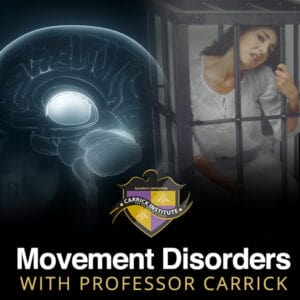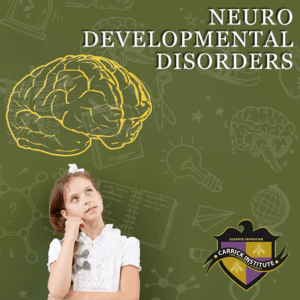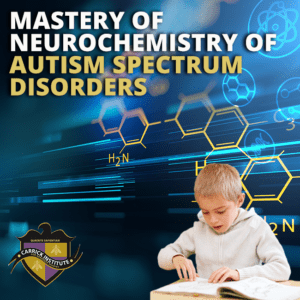A 4-part series discussing the neurologic basis and effective treatment protocols for the most common conditions that present to clinicians’ offices – chronic pain conditions. Scholars will master everything from chronic back pain, fibromyalgia, chronic migraines, chronic fatigue syndrome (Myalgic Encephalomyelitis), irritable bowel syndrome, chronic pelvic pain, neurogenic bladder, chronic TMJ, and more. Recognized by the NIH and US Congress and an emerging set of co-aggregate disorders with common central mechanisms, you will gain deep insights into identifying, examining, diagnosing, and treating this diverse but connected group of conditions.
Mastery of Chronic Overlapping Pain Conditions Course Objectives
- Provide participants with skills to understand, diagnose, and treat Chronic Overlapping Pain Conditions in clinical practice for improved clinical success.
- Establish a compendium of history, examination and assessment tools specific to such conditions, using a combination of lecture, and skill demonstration with supervised, hands-on practicums.
- Participants will complete the course with “world-class” knowledge encompassing the depth and breadth of the current research base in this field.
- Complete formative and summative evaluations to demonstrate skills and knowledge competence.
Topics:
Course 1- Central Sensitization, Fibromyalgia, and Widespread Pain- Define CSDs
- Develop the concept of Chronic Overlapping Pain Syndromes
- Includes: fibromyalgia(FM), myalgic encephalomyelitis/chronic fatigue syndrome(ME/CFS), migraines, Gulf War Illness (GWI), irritable bowel syndrome (IBS), myofascial pain syndrome (MFPS), neurogenic bladder and chronic pelvic pain (CPP).
- Discuss co-morbidities between syndromes:
- Chronic pain, fatigue, digestive symptoms, sleep disturbances, hormonal disturbances, blood sugar imbalances, sensory sensitivities to light, sound, smell and light touch, etc
- Define FM with an emphasis on lack of clinical biomarkers on imaging and bloodwork
- Emerging biomarkers #1
- MRI imaging changes in chronic pain
- fMRI and functional connectivity
- Need to discuss functional brain networks
- Default Mode Network
- Sensorimotor Network
- Salience Network
- Central Executive Network
- others
- Comparison with MSK pain such as osteoarthritis
- Discuss the use of qEEG biofeedback as a mean of network reorganization
- Discuss outcome assessment tools for FM and chronic pain
- Need to discuss functional brain networks
- Review of Part 1
- Role of the Prefrontal Cortex in Top-Down management of chronic pain
- Compare and contrast with Bottom-Up pain management strategies
- Discuss the use of Cognitive-behavioral therapy (CBT) and Exercise in top-down management of FM and COPCs
- Discuss the role of the corticospinal tract (CST) in regulating and modulating pain perception
- Anatomy of CST with relevance to M1 and S1 origin of fiber
- Discuss transcranial magnetic stimulation and appropriate targets
- Primary Motor Cortex (M1)
- Prefrontal Cortex
- Emerging Biomarkers #2
- Glial activation
- Neuroimmunity and neuroinflammation
- Cytokines involved
- Meningeal regulation of glial activity
- Meningeal anatomy
- Extension through sutures
- Sensory map of the cranium
- Treatment of meningeal-based irritation causing glial activation
- Cranial work
- Upper cervical work
- Techniques and Hands-On
- Dorsal root ganglia (DRG) and FM
- Neuroimmune dysfunction
- Causing global sensory neuropathy
- Skin biopsy and eye study tests
- C-tactile Fibers
- Top-down management of C-tactile
- Vibration effects of Pain Perception
Course 3- IBS, Visceral Manipulation, and Pelvic Pain
- Review of Parts 1 and 2
- Discuss the role of the Vagus nerve in neuroimmunity and neuroinflammation
- NRM and NTS
- Neurotransmitters involved
- Clinical applications currently using vagus nerve stimulation in medical practice
- Emerging use of transcutaneous auricular vagal nerve stimulation (tAVNS)
- Anatomy and location
- Devices
- Parameters
- Exhalation as a beneficial treatment mode
- Home exercises for vagal stimulation
- Abdominal vagal stimulation, enteric stimulation, and pelvic nerve stimulation
- Techniques and hands-on
- Esophagus
- Stomach
- Gall bladder
- Small intestine
- Large intestine
- Bladder
- Uterus/Prostate
- Discussion of IBS as a neuroimmune condition
- Enteric glial cells as a target
- IgG diet and probiotics
- tAVNS and migraines
- tAVNS not effective for Gulf War Illness
Course 4 – Chronic Fatigue Syndrome and Complex Chronic LBP
- Review of Parts 1-3
- Define and discuss ME/CFS
- Conditions to rule out
- Outcome assessment tools
- Focal areas of suspected neuroinflammation
- Triggers for ME/CFS
- Viral
- Stressful Life Events
- Dental
- Treatment of comorbidities
- Digestive
- Dysbiosis
- Chronic infections
- Endocrine
- Sleep
- Supplement recommendations
- Glial targets for laser therapy
- FM
- CFS
- IBS
- Migraine
- CPP
- Music-induced analgesia and dance as therapy in COPCs
- Vestibular rehabilitation of the cerebellar vermis and COPCs
- Review and Q&A








